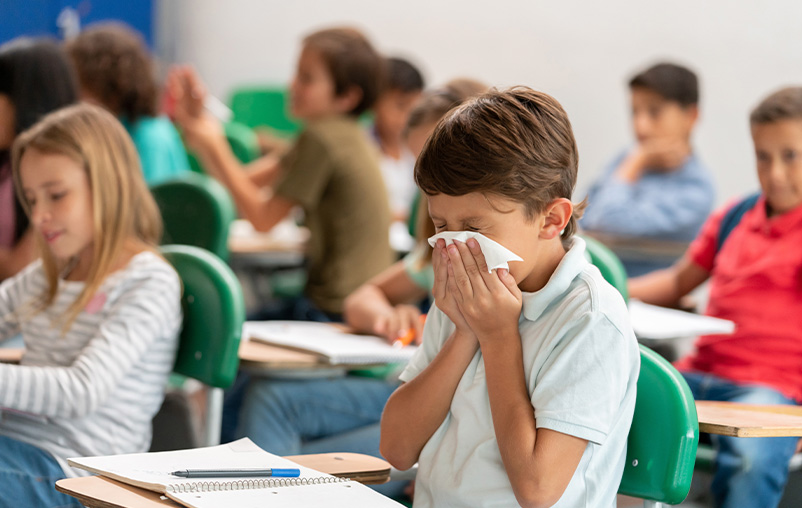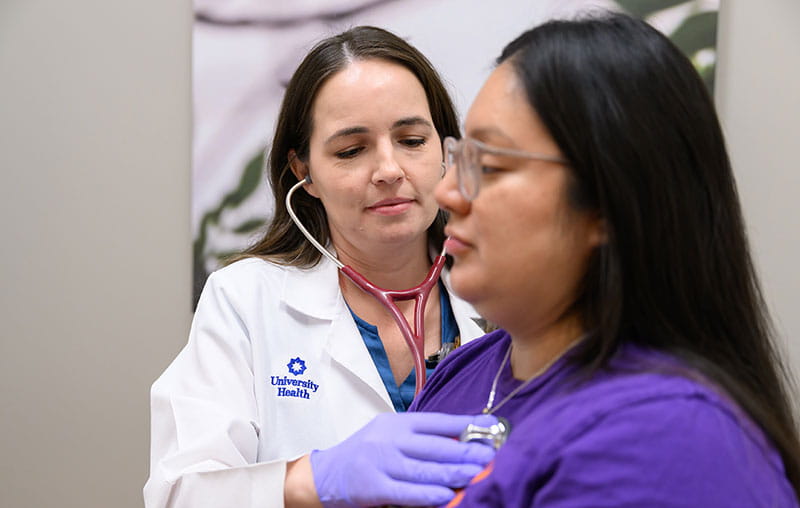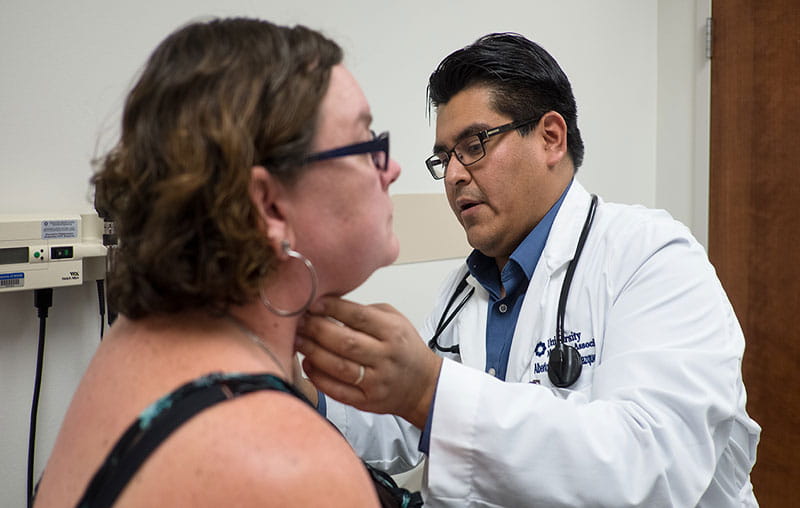This post was first published by Alamo City Moms Blog.
A new school year brings a new season of fall sports. Parents are gearing up for evening practice shuttling, weekends of sideline cheering and spirited wardrobe upgrades. As much as kids and parents love their sports, the potential for a sports injury is never far from most parents’ minds.
University Children’s Health Orthopedic team offers specialized medical care for children who injure themselves playing or participating in sports with a focus of getting them safely back in the game.
What are the most common pediatric sports injuries?
The most common sports injuries are bruises and sprains. Bruises can happen anywhere along a large muscle such as the thigh, leg, arm or back. Sprains typically occur in the ankles, but other body parts can be sprained as well.
Although these injuries are not exclusive to playing sports, it is important to note that participation in competitive activities can often have long-term effects on young developing bodies.
How can injuries be avoided? What can parents/coaches do to help?
The best way to avoid injury is to be sure you are using proper equipment and safety gear in an appropriate manner. For example:
- Wear padding in sports like football and volleyball.
- Use mouth guards or eye protection when needed.
- Wear proper shoes for the type of surface you will be playing on.
- For some kids, additional equipment may be required, like knee and ankle braces. A sports trainer on the team or your doctor typically determines the need for additional equipment.
- Tell young athletes to be aware of their surroundings—this can help avoid unnecessary collisions.
- Some activities should have limits, such as the number of pitches thrown in softball/baseball, number of innings played, etc. Parents and coaches can help keep track of how long and how often kids are practicing/playing a specific sport. Each sport is different, and you can check with your child’s coach or sports trainer to know the limits that are set.
- In more advanced and competitive sports, trainers/coaches typically teach injury prevention techniques such as the proper ways to turn, cut, and pivot to avoid knee and ankle ligament injuries.
When should you allow for natural healing at home, and when should you visit a doctor for an injury?
Most injuries, such as sprains, heal with Rest, Ice, Compression, and Elevation (RICE). If, however, your child has any of the following, you may need further evaluation from a doctor:
- Injuries that do not respond to RICE after several days
- The inability to bear weight on the extremity
- Locking (the joint becomes “stuck”)
- Pain that persists
If the injury is severe from the beginning, such as a suspected broken bone, you may need to take your child to an urgent care facility or a pediatric emergency room.
When an injury occurs, how can a doctor help fix it?
Most sports injuries, especially in children, heal with time and rest. In most cases, the doctor’s role is to diagnose the problem and determine how much time away from play is needed to allow for full recovery.
In some cases, doctors identify more serious injuries that may require medical interventions, such as torn ACLs that need surgical reconstruction.
Non-contact twisting injury in the female athlete often raises the doctor’s suspicion for an ACL, which can prompt more sophisticated evaluation with tools like an MRI.
How long does the healing process usually take?
The healing process varies depending on the severity of the injuries. For example:
- Bruising can sometimes take several weeks to fully resolve. Despite this prolonged period of time to resolution, your child can typically return to play once he/she is pain free.
- Sprains are graded on the number of involved ligaments injured—often between 1 and 3—and the degree to which they are injured: slightly stretched versus completely torn. Sprains can take anywhere from a day to several weeks to resolve, depending on the severity and/or the ligaments involved.
- Some fractures can be treated without surgery if the surgeon can align the bones, but others will require an incision. Immobilizing the healing limb in a splint or cast or traction may be necessary anywhere for from three to ten weeks, depending on the severity of the fracture.
The most important thing to remember is everyone’s body is different and the athlete needs to be in tune with his/her body.
Return to play will typically occur once the athlete is pain free, can demonstrate sport-specific maneuvers without difficulty, and the team sports trainer or your physician determines it is OK-to-play.
What is the risk of early return to play?
Most young athletes are usually eager to get back to the field/court; however, early return to play is cautioned. When the body is not fully healed, it is open to risk of both a repeat injury, which can often be worse than the original, or potential damage to another body part.
Both of these things can lead to being sidelined for longer than just the remainder of a season. It is best to allow for complete healing first and then return to play fully healthy.
Parents, coaches, trainers and doctors are all part of the team to help injured child athletes return to good health and be ready to get back in the game.





